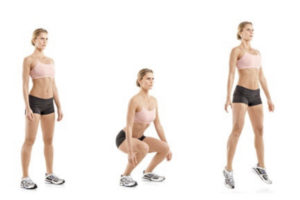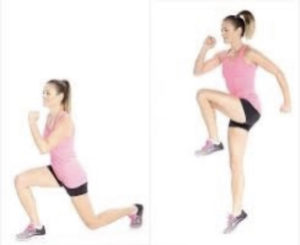. 2020 May 1;19(2):347-357.
eCollection 2020 Jun.
The Effects of Assisted and Resisted Plyometric Training Programs on Vertical Jump Performance in Adults: A Systematic Review and Meta-Analysis
- PMID: 32390728
- PMCID: PMC7196747
Free PMC article
Abstract
Traditional, assisted and resisted plyometrics are considered to be effective training methods for improving vertical jump performance. The purpose of this systematic review and meta-analysis was to compare effectiveness of traditional, assisted and resisted plyometric methods on vertical jumping ability in adults. Available literature was searched using MEDLINE (via EBSCO), SPORTDiscus (via EBSCO), Scopus and Web of Science databases. The methodological quality of studies was assessed using the PEDro scale. Peer-reviewed studies were accepted only if they met all eligibility criteria: (a) healthy adults mean age > 18 years (b) training program based on plyometric exercises (c) the study reported on vertical jump height for the countermovement jump or drop jump performance. Of the 5092 articles identified, 17 studies were included in the qualitative and quantitative analyses. Both funnel plot analysis and Egger’s test (p = 0.04) indicated publication bias for the comparison of resisted plyometrics and control condition. No publication bias was found for the other meta-analyses (p > 0.05). The effects of the traditional and assisted plyometric methods, when compared with the control condition (a non-plyometric condition), on jump height were moderate (SMD = 0.68, 95% CI 0.37 to 0.99, p < 0.0001; SMD = 0.70, 95% CI 0.20 to 1.20, p = 0.006, respectively). The effects of the resisted plyometric methods, when compared with the control condition, on a jump height was small (SMD = 0.48, 95% CI 0.17 to 0.79, p = 0.002). There were no significant differences between the training effects of the assisted and traditional plyometric interventions on jump height (SMD = 0.62, 95% CI -1.66 to 2.91, p = 0.59), nor between the resisted and traditional plyometric training programs (SMD = 0.2, 95% CI -0.19 to 0.23, p = 0.86). Traditional, assisted and resisted plyometric methods are effective training modalities for augmenting vertical jump performance in healthy adults. Resisted and assisted plyometric methods are equally effective as the traditional plyometric method in improving vertical jumping ability in healthy adults.
Keywords: Plyometric exercise; human physical conditioning; lower limb; resistance training; stretch-shortening cycle; vertical jump.
Journal of Sports Science and Medicine.
Response by Dr. Mark Rathjen PT, DPT CSCS.
CORE
Physical Therapy, Omaha Ne
17 studies conclude in the meta analysis states plyometrics are effective for vertical jump training. Both assisted and resisted methods were tested and evaluated to be equally effective in the subjects tested. At CORE, we utilize this approach when treating our athletes during the rehabilitation process. We are a family owned business and offer one-on-one physical therapy care with a doctor of physical therapy.
C.O.R.E. Physical Therapy and Sports Performance PC, is owned and Operated by Dr. Mark
Rathjen and Dr. Claire Rathjen. CORE is a family owned business that has been established in
2015 and is proud to serve the greater Omaha metro area. We specialize the in treatment of athletes.
For More information, Please feel free to contact us https://coreomaha.com/contact/
Please feel free to follow us at https://www.facebook.com/COREomaha/
To get started https://coreomaha.com/getting-started/
For more Blog information https://coreomaha.com/blog/
CORE Physical Therapy and Sports Performance PC.
17660 Wright St, suites 9/10
Omaha, NE 68130
402-933-4027


